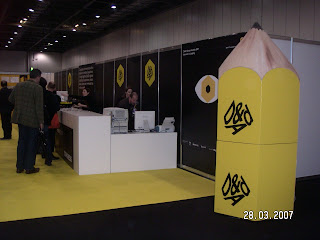

Here is a geek story about an angry mob that is fast leaking into the mainstream and as marketers you really should know about it. Like really.
Over the weekend a story about the CNET owned gaming site GameSpot exploded all over blogs, social news sites and then the mainstream news and yes there were casualties.
This story covers themes like accusations of advertisers manipulating content, what happens when big corps take over indie media properties, the high stakes world of gaming production and how not to handle a branding crisis.
It all started last week when GameSpot sacked its editorial director Jeff Gerstmann, who has been working for the site and reviewing games for 11 years, with no explanation.
Rumours quickly started circulating on blogs and social news sites that he had been fired for a negative written review and scathing video review (which GameSpot has since removed) of Eidos’ much hyped new release Kane & Lynch: Dead Men.
Apparently Eidos, which had a lot resting on the game, withdrew US$200,000 in advertising from GameSpot and was furious about the review. Where these rumours started is irrelevant, they have taken on a life of their own and the vocal and very well connected – via social networks and forums – gamer community called for blood.
This wasn’t one of those short lived peeves that gamers have (like for instance about gamers dropping out of shared tasks in the middle of a battle in World of War Craft), this, as far as the community is concerned, fundamentally changes the review system as no one can be sure that undue pressure is not being put on the editorial staffers at game sites and in magazines.
It’s no secret that the gaming biz is now bigger than
It has to be made clear that there is commenting going on but no real clarification as to why Gerstmann was sacked other than a vague statement from Cnet that good reviews can’t be bought, but the community doesn’t believe this.
Talk has moved quickly from anger at Gerstmann’s axing to a wider conspiracy theory that gaming reviews are now so valuable to the top gaming houses that they could and are being bought for advertiser dollars.
Gamers started flaming Gamespot, it’s corporate owners Cnet, Eidos and most significantly advertisers on the Gamespot site and then there was the talk of the oganised boycotts.
One game site expressed its outrage, that the industry had been tainted, by changing its name from Destructoid to Cashwhore and pointedly adopted the GameSpot livery almost exactly and includes messages like: “Buy huge ads that eat the entire site and get a 9/10 review for free”.
This story was creating so much activity online that, despite the details being sketchy, it moved out of the social news and gaming sites and into the mainstream. MTV.com, The Guardian and numerous newspapers and sites wrote about the firing and the stir it has caused.
There was even a tantalising suggestion that Pepsico was trying to distance itself from Gamespot by removing, over the weekend, its signicant Mountain Dew branding on the site (which itself was said to have replaced the dumped Kane & Lynch ads).
OK so what’s it mean?
Firstly the companies involved need some serious crisis management training whether what the blood thirsty gamer blogging community suspects is true actually happened or not. Eidos and CNET said little of value over the weekend while a vocal angry mob spread word of the injustice at an alarming rate and all these companies were saying by remaining silent seemed to be we can’t defend the indefensible, at least that’s how fans saw it.
Secondly it’s a really bad idea to try and buy content or influence it in any market on any platform. Readers hate to think they are reading content that has been influenced by commercial considerations rather than editorial ones no matter whether they are reading a games site, the Wall Street Journal or Teddy Bears Monthly (I really hope there's no such title). In today's fully connected and totally social communications landscape it's a really bad idea. If someone suspects tampering , it can go from a nagging suspicion to a 10,000 comment streamed negative brand attack in just a few days.
The outcomes (even if the rumours are untrue and what insiders are hinting, that Gerstmann was fired for broader reasons is more accurate) are; GameSpot has suffered a significant and sustained on and offline assault, Eidos has suffered the same and the game title itself is likely to suffer seriously in sales.
The smart idea would have been to heavily advertise Kane & Lynch both offline and online and run a heavy keyword search camapaign, since if you type the title into most search engines now all you get is damaging info about the Gerstmann scandal. Eidos really needs to try some sort of counter offence to get some postive messages out there because now potential consumers who don't necessarily follow the hard core gaming press, either on or offline, are only hearing not only what a rubbish game it allegedly is supposed to be but also that Eidos is a manipulative corporate ogre.
Gerstmann broke his silence through Facebook to simply ask people to stop calling his parents house at 2am looking for comment (according to Wired). He further says he can't reveal anymore for legal reasons.
Note: pics are Destructoid's new site livery and Penny Arcade's take on the whole situation.
UPDATE: Just after posting this GameSpot posted a brief note on it's site but gave few details. Check out the readers comments to get an indication of whether or not it is likely to mitigate the crisis.



















